Men's shirts in the 2000s were a vibrant blend of bold graphics and casual styles. You'd find oversized tees showcasing everything from band logos to quirky statements, reflecting personal tastes and cultural influences. The athleisure trend also emerged, offering fitted performance tees that melded comfort with style, perfect for both gym and casual outings. Layering became trendy, allowing you to mix textures and colors with ease. With fast fashion brands churning out new styles weekly, choices became plentiful, making it easier for you to express individuality. Keep exploring, and you'll uncover even more fascinating trends from this iconic decade.
Influential Fashion Movements
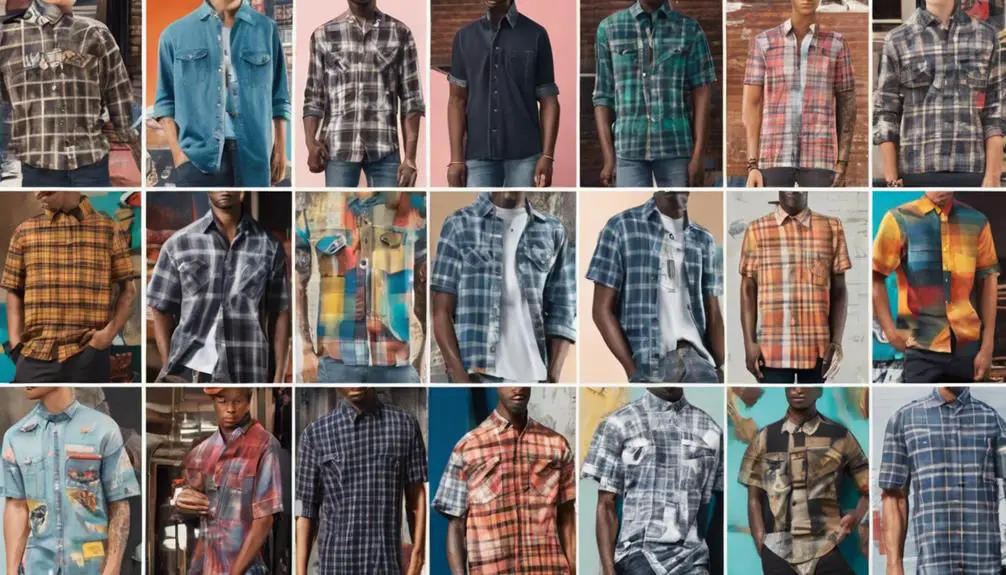
The 2000s marked a vibrant era in men's fashion, driven by influential movements that reshaped how guys approached their wardrobes. You saw the emergence of the Metrosexual Movement, where grooming became paramount. Picture yourself layering v-neck sweaters over collared shirts and ties, a look made popular by celebrities like Josh Duhamel. This trend emphasized a polished yet approachable aesthetic. During this time, vintage clothing labels began to gain recognition, with collectors seeking out unique pieces that showcased vintage clothing characteristics. Amidst this, the Hipster Aesthetic flourished, offering a revitalizing alternative. You gravitated toward vintage flannels and graphic tees, embracing slim-cut silhouettes that spoke to your individuality. Band merchandise became a staple, with graphic tees featuring your favorite artists becoming symbols of loyalty and self-expression.
Streetwear culture further transformed your style, making bold graphic and oversized tees essential. Brands like BAPE set the tone, merging comfort with urban flair, while trucker hats topped off your look, adding a casual edge. The Athleisure Revolution blurred the boundaries between sportswear and everyday fashion, leading you to explore stylish button-up shirts and polo shirts that balanced comfort with a polished appearance. Each of these movements invited you to explore and express your unique identity through your wardrobe.
Casual and Streetwear Trends
Casual men's fashion in the 2000s often embraced a mix of creativity and comfort, showcasing your personal style through bold graphic tees and relaxed silhouettes. As streetwear culture exploded, you saw the rise of essential pieces like dark wash jeans, which became a wardrobe staple. These jeans, paired with graphic tees, allowed you to make a statement effortlessly, echoing the laid-back attitude of the decade.
Fashion brands like Von Dutch solidified their place in casual style, popularizing trucker hats that became synonymous with casual coolness. You could layer a short-sleeved shirt over a long-sleeved one, creating an eye-catching ensemble that played with textures and colors. Skater fashion also evolved, moving from baggy jeans to slimmer cuts that offered a cleaner look, with Vans remaining your go-to footwear choice.
The hipster aesthetic introduced skinny jeans and vintage flannels, emphasizing authenticity and individuality in casual wear. This eclectic mix of styles encouraged you to express yourself, shaping a decade where comfort met creativity, allowing your wardrobe to reflect who you were in a vibrant and ever-changing fashion landscape.
Graphic Tees and Layering
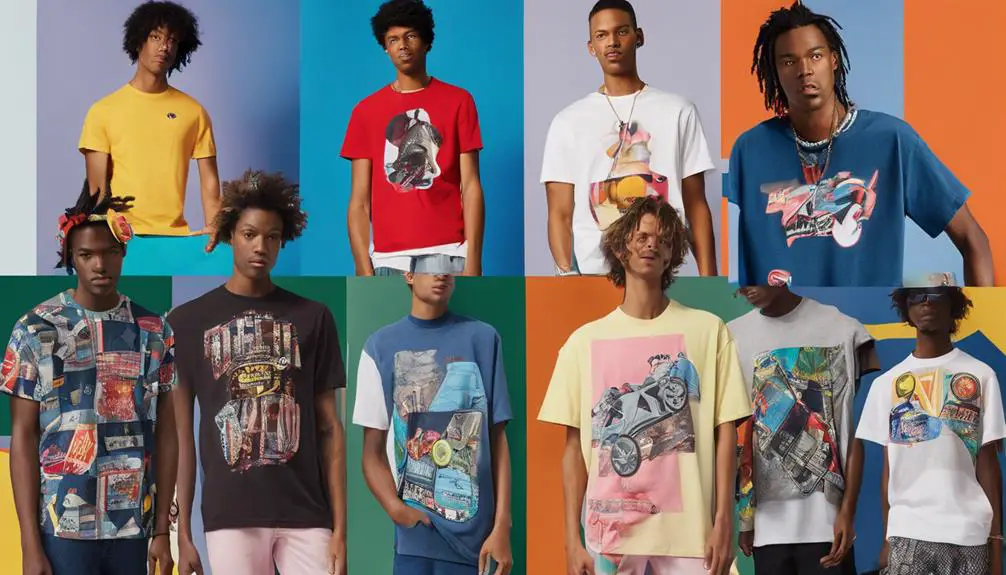
Graphic tees exploded in popularity during the 2000s, becoming a cornerstone of casual men's fashion that let you showcase your personality with ease. With striking art prints and brand-centric imagery, these tees provided a canvas for self-expression, appealing to a wide range of interests, from music to pop culture. You likely noticed the surge in band merchandise, especially from boy bands, as retailers like Hot Topic tapped into this trend, offering styles that resonated with fans.
Layering became essential in this era, allowing you to mix textures and colors creatively. You might've paired a short-sleeved graphic tee over a long-sleeved shirt, effortlessly combining comfort and style. This approach not only added depth to your outfit but also made it adaptable to changing weather conditions.
Many men embraced the laid-back vibe of graphic tees, often teaming them with jeans or cargo pants for a relaxed yet stylish look. This versatility meant you could express your personal style while maintaining practicality. Whether you were headed to a concert or hanging out with friends, graphic tees and layering defined a casual aesthetic that remains influential in men's fashion today.
Athleisure and Comfort Styles
Blurring the lines between sportswear and everyday fashion, athleisure emerged as a dominant trend in the 2000s, prioritizing comfort without sacrificing style. You embraced this movement, opting for fitted polo shirts and performance tees that seamlessly shifted from gym to brunch. Tracksuits, once confined to workouts, became your go-to for casual outings, especially with chic updates from brands like Gucci and Lacoste.
Layering gained popularity as you creatively paired short-sleeved shirts over long-sleeved ones, adding depth to your outfits while keeping things comfy. Lightweight, breathable fabrics revolutionized your wardrobe, allowing you to enjoy moisture-wicking performance tops that felt great all day.
Athleisure shirts often sported bold graphics and logos, making a statement that was both functional and fashionable. You found that these pieces offered versatility—perfect for a casual day out or an impromptu workout. The athleisure trend not only reshaped your approach to fashion but also reflected a broader cultural shift towards valuing comfort and personal expression. In this era, you learned that style doesn't have to come at the cost of comfort, and you wore that philosophy proudly.
Denim Styles and Variations
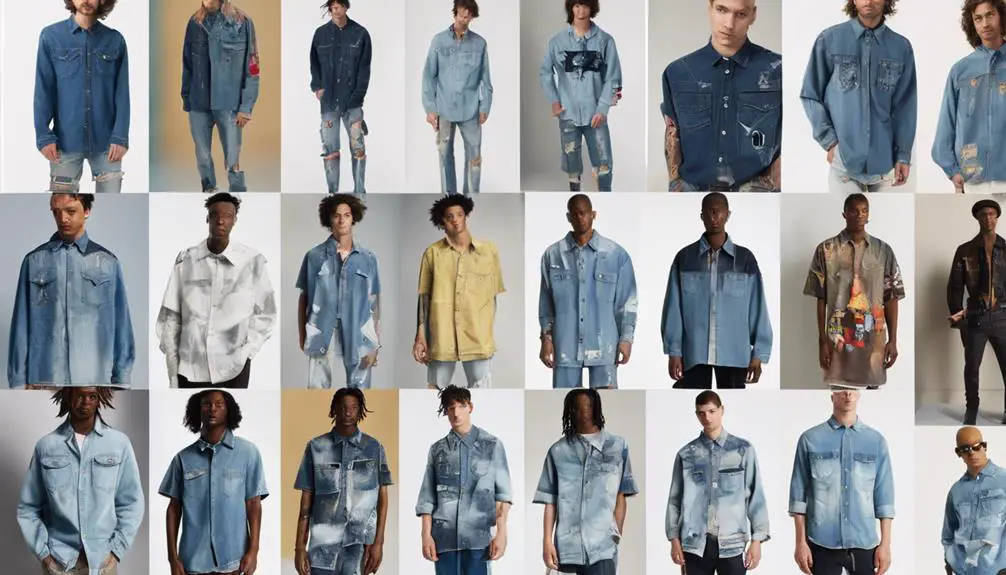
As you dove into the world of 2000s fashion, denim styles became a canvas for self-expression, offering a plethora of options to suit your unique taste. The decade began with baggy jeans, embodying a relaxed vibe, but soon, the trend shifted towards slimmer fits and cleaner silhouettes. Brands like Levi's catered to your style cravings, providing must-have options like the 513 dark wash and the classic 501 grey stone wash.
The era also embraced colored denim, with vibrant hues such as red and pastel shades allowing more personal flair. Vintage styles from True Religion and Empyre gained popularity, appealing to your nostalgic side. Denim layering became a go-to trend, as you skillfully mixed textures and colors, creating casual yet stylish outfits that turned heads.
| Style Type | Key Features | Iconic Brands |
|---|---|---|
| Baggy Jeans | Loose fit, comfort | JNCO, Echo |
| Colored Denim | Bright, vibrant hues | Levi's, American Eagle |
| Vintage Styles | Unique designs, nostalgia | True Religion, Empyre |
This diverse denim landscape not only defined the decade but also highlighted your individuality.
Iconic Accessories of the Era
In the vibrant world of 2000s fashion, iconic accessories played a pivotal role in defining personal style and making bold statements. Trucker hats, popularized by brands like Von Dutch, became a symbol of casual coolness, easily adding a laid-back vibe to any outfit. You'd often find graphic tees featuring bold designs or band logos, essential for showcasing your individuality and layering effortlessly with other clothing.
Tinted sunglasses were another must-have, enhancing your look while providing sun protection. With vibrant and subtle tints, they were the perfect finishing touch to your outfits. Meanwhile, chain accessories added an edgy flair, perfectly complementing baggy jeans and skater-inspired styles that dominated the decade.
Don't forget about bracelets and wristbands; colorful silicone wristbands and beaded options became trendy ways to express personal beliefs or affiliations with various causes. These accessories weren't just afterthoughts; they were integral to your overall style, helping you stand out and make a statement in a world where self-expression through fashion was key. Embracing these iconic accessories meant embracing the essence of the 2000s, where every detail counted.
Color Trends in Men's Fashion
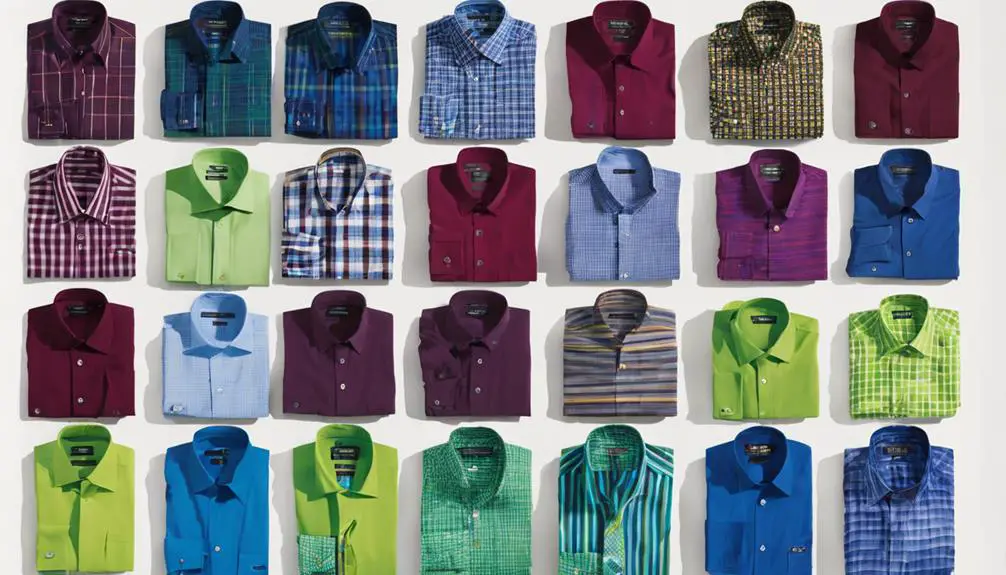
Accessories set the stage for bold self-expression, but the colors you chose for men's shirts in the 2000s truly brought your outfits to life. This era witnessed a vibrant palette that pushed boundaries and challenged traditional gender norms. Millennial pink emerged as a standout choice, allowing you to express your individuality like never before. Casual styles flourished, with colored denim shirts in bright reds and soft pastels giving you versatile options for any occasion.
Polo shirts, often from brands like Abercrombie & Fitch, leaned towards muted hues, but their classic appeal kept them in the mix. Layering became a popular technique, with you pairing short-sleeved shirts over long-sleeved ones in contrasting colors, adding visual interest and depth to your look.
Graphic tees took center stage in casual wear, bursting with colorful designs and bold prints that made statements about who you are. These eye-catching styles didn't just serve a fashion purpose; they allowed you to showcase your personality and passions. Overall, the 2000s color trends in men's shirts reflected a dynamic shift toward self-expression, encouraging you to experiment and embrace your unique style.
Band Merchandise and Fandom
While the 2000s ushered in a wave of self-expression through clothing, band merchandise quickly emerged as a powerful medium for showcasing musical loyalty and identity. T-shirts emblazoned with logos and artwork from boy bands became essential items in your wardrobe, allowing you to wear your favorite artists proudly. Retailers like Hot Topic tapped into this trend, offering a plethora of graphic tees that catered to every music taste.
- MTV's Total Request Liveinfluenced your fashion choices by regularly featuring hit music videos.
- Hoodies, hats, and accessories complemented your band tees, creating a complete fandom look.
- Wearing band merch became a badge of honor, symbolizing not just support but a shared community among fans.
- The designs ranged from subtle to bold, letting you express your personality while connecting with others.
As you navigated the casual fashion landscape of the decade, band merchandise became a staple that transcended mere clothing. It transformed into a canvas for your musical identity, reflecting not just your taste but your place in a vibrant youth culture.
The Rise of Fast Fashion

As band merchandise captured the essence of fandom, another significant movement was reshaping the fashion landscape: the rise of fast fashion. Brands like H&M and Zara revolutionized shopping habits by churning out affordable clothing that mirrored high-end trends at lightning speed. You found yourself drawn to stores where new collections dropped weekly, enticing you to refresh your wardrobe often. This shift fostered a culture of disposability, where clothes were quickly discarded for the next trend.
Fast fashion democratized style, making trendy shirts accessible to a wider audience. Casual button-ups and graphic tees became staples, allowing you to express your identity while embracing the metrosexual and hipster aesthetics that defined the 2000s. Collaborations between fast fashion retailers and high-end designers, such as H&M's partnership with Karl Lagerfeld, blurred the lines between luxury and mass-market fashion, making chic designs more attainable.
This era didn't just redefine what you wore; it altered how you approached fashion altogether. With every purchase, you contributed to an evolving cycle of consumption, reflecting a dynamic landscape where personal expression thrived amidst the whirlwind of trends.
Nostalgic Fashion Revivals
In the early 2000s, nostalgia became a compelling force in men's fashion, breathing new life into trends from previous decades. You couldn't help but notice how styles from the 90s and earlier were making their way back onto the streets, resonating with a generation enthusiastic to express their individuality. Vintage clothing labels played a significant role in this revival, as they provided a sense of authenticity and history to the garments worn. Graphic tees with bold designs or band logos symbolized personal expression. Layering short-sleeved shirts over long-sleeved ones created a casual yet visually engaging look. Polo shirts, especially from brands like Abercrombie & Fitch, became staples, often sported with popped collars. Vintage flannel shirts, a nod to the grunge movement, paired perfectly with skinny jeans for that relaxed vibe.
This blend of past and present transformed your wardrobe, making it easy to showcase your musical loyalties and casual style. Retailers like Hot Topic played a crucial role, offering band merchandise that allowed you to wear your heart on your sleeve—literally. Ultimately, these nostalgic revivals weren't just about clothing; they were about identity, community, and a shared love for the trends that shaped a generation. For many collectors, understanding the significance of vintage labels added depth to their fashion choices, connecting them to the stories behind their clothing.
Frequently Asked Questions
What Shirts Were Popular in the 2000s?
In the 2000s, you'd see graphic tees expressing bold statements, preppy polo shirts with popped collars, and laid-back flannel layers. Fitted dress shirts and vintage-inspired button-ups also emerged, reflecting diverse styles and personal expression.
What Were Men Wearing in the 2000s?
In the 2000s, you embraced bold graphic tees, trendy polos with popped collars, and layered looks. You showcased your style with casual button-downs and v-neck sweaters, reflecting a blend of comfort and self-expression.
What to Wear to a 2000S Party for Men?
To nail that 2000s party vibe, rock a graphic tee, layer with a fitted long-sleeve shirt, throw on baggy jeans, and finish with classic sneakers. Don't forget a trucker hat for that authentic touch!
What Did Men Wear in 2002?
In 2002, you'd rock graphic tees, layered with long-sleeves, or sport a polo with popped collars. Baggy jeans and trendy accessories like trucker hats completed your laid-back, expressive style that defined the era.
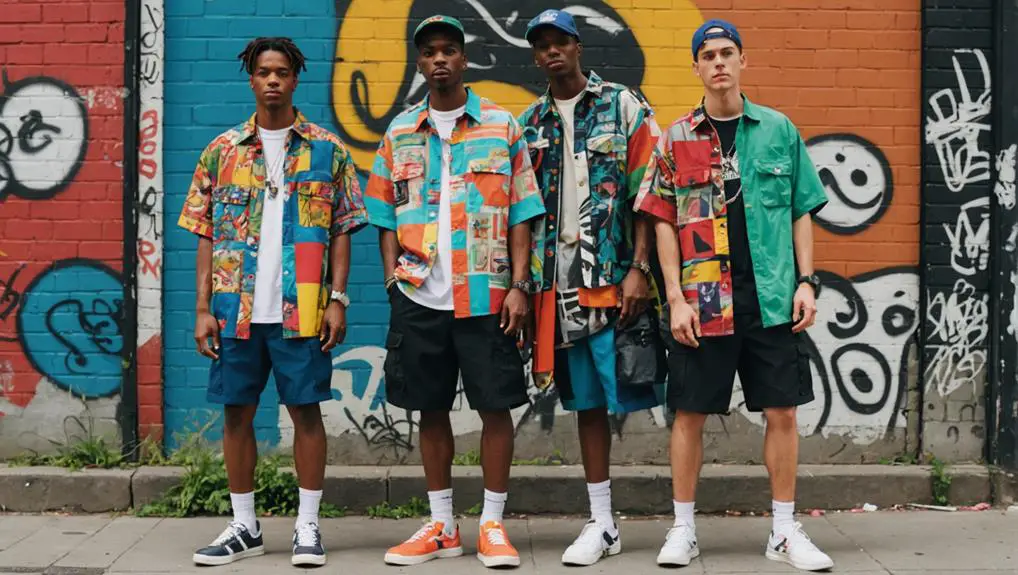


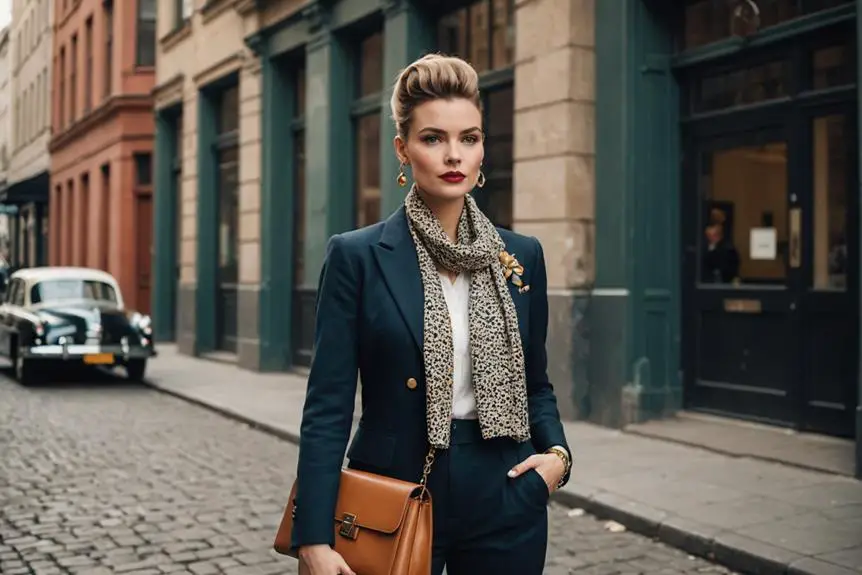

Your blog is like a breath of fresh air in a sea of negativity and pessimism Thank you for being a source of light and hope